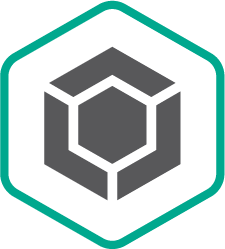KasperskySecure Mail Gateway
Kaspersky Secure Mail Gateway is a fully integrated email system and mail security solution – packed into a single ready-to-use virtual appliance. Based on the popular Kaspersky Security for Linux Mail Server, it provides next-generation email protection from known and unknown threats, including spam, phishing and BEC, as well as all forms of malicious attachment.
It’s easy to install and manage, saving you time on day-to-day mail and mail security tasks, while delivering award-winning protection that helps keep your business safe while boosting user productivity.
FEATURES
Effective anti-malware engine including targeted attacks prevention
Kaspersky Secure Mail Gateway protects corporate email against malicious or junk messages and, when integrated with Kaspersky Anti Targeted Attack Platform (KATA), helps protect the corporate IT network against email-using targeted attacks.
Pre-built virtual appliance versions for all the most popular platforms, including VMware ESXi and Microsoft HyperV.
Multi-layered anti-malware capabilities
Kaspersky Secure Mail Gateway includes the latest version of Kaspersky’s award-winning anti-malware engine. Furthermore, it receives real-time information from the cloud-based Kaspersky Security Network (KSN) – so you benefit from a Linux mail server protection solution that delivers even better performance in detecting and removing malicious attachments from incoming emails including spyware, ransomware, wipers and miners, exploits, and as yet unknown specimens of advanced malware.
With real-time updates from the cloud, Kaspersky’s malicious URL & IP filter blocks emails that include links to infected sites or malicious files, and those sent from addresses reputed to be spam sources.
Embedding malicious scripts into Office files is a popular technique used by extremely dangerous specimen such as ExPetr / Petya / NotPetya. Kaspersky Lab’s next-generation anti-malware provides effective protection against such threats.
Anti-spam and content filtering
Kaspersky’s anti-spam engine includes two powerful technologies:
Enforced Anti-Spam Updates Service (EASUS) – which uses push technology, directly from the cloud-based Kaspersky Security Network, to deliver real-time updates. By reducing the ‘update window’ from 20 minutes to less than 1 minute, EASUS helps to protect against Zero-Hour spam and spam epidemics.
Cloud-assisted Reputation Filtering – can ‘rate’ suspicious emails, place them in quarantine and then recheck them when updated information becomes available. This helps to defend you against unknown spam – while also reducing the number of false positives.
You can easily set policies to block unwanted mass mail from reaching your end users.
Suspicious messages are placed in the anti-spam quarantine, managed from the web interface. These messages can be reviewed later.
For organizations using MS Exchange, the Spam Confidence Level (SCL) rating, which lets users define actions for messages according to SCL thresholds, is now included.
Supports internationalized (non-Latin) characters in email addresses.
Kaspersky Secure Mail Gateway now detects messages containing Unicode spoofing, which uses Unicode symbols visually resembling proper characters used in legitimate mail addresses and URLs.
Kaspersky Secure Mail Gateway now recognizes and blocks certain types of files within archives and compound objects, providing detection inside multi-layered archives widely used by scammers.
Integration support
Kaspersky Secure Mail Gateway can be integrated with KATA – Kaspersky Anti Targeted Attack Platform. After integration, the application can send copies of messages to KATA for scanning. Based on the results of the KATA scan, the application can then block individual messages.
Suspicious messages are placed in the KATA quarantine, managed from the web interface.
For those organizations that cannot participate in Kaspersky Security Network (KSN), Kaspersky Secure Mail Gateway can now integrate with Kaspersky Private Security Network.
After integration with Kaspersky Private Security Network, the application can use the KSN reputation databases locally, benefiting from the latest, globally acquired threat intelligence without sending any data outside the organization.
At-a-glance monitoring and flexible reporting
Kaspersky’s easy-to-use management console, Kaspersky Security Center, gives you the ability to monitor security for all your Linux mail servers – including clusters – from a single console. If a security incident occurs, the system administrator will automatically be informed about the affected server and the cause of the issue.
Help desk specialists can now access a user’s backup and personal deny/allow lists via a standard web interface, without disturbing system administrators or end users.
The web dashboard provides an at-a-glance view of status and monitoring, including information about the most recently found malware.
SNMP support lets you monitor any type of event, using SNMP events and traps.
You can choose your method of application management – using the web console or Command Line Interface (CLI).
Customisable reports help you to monitor and analyse your security and policies.
Administrators and document owners are informed about policy violation incidents – so immediate action can be taken.
Customizable reports help you to monitor and analyze your security and policies.
Generate an archive of information about the operation of the application to send to Kaspersky Lab Technical Support.
Authorized Helpdesk account users can access application performance reports.
Schedule and configure notifications to users about the results of their scanned messages. Notifications contain a list of the latest messages in Backup.
For those using SIEM systems, the logs can now be generated in Common Event Format (CEF), enriching your picture of corporate security with mail-related events.
Easy to install and maintain
Rolling out Kaspersky Secure Mail Gateway is as simple as deploying a virtual machine from a template. All the components are pre-configured for seamless interoperability; all you need is a basic set-up to integrate it into your IT infrastructure.
Integration helps you in setting up rules and policies. Communication between Kaspersky Secure Mail Gateway and LDAP server can be encrypted using TLS or SSL.
Kaspersky makes it easy for you to implement group-based scanning policies and rules.
You can use IPv6 naming for Internet addresses, when creating traffic rules.
The clustered architecture supports full solution scaling, with the capability to centrally manage all servers in the cluster through the program’s web interface. This helps tackle growing traffic loads and mitigate unexpected node failure.
In addition to running manual updates for anti-malware, anti-spam and anti-phishing module technologies, you can also specify rules for fully automatic updates.
Licensing and subscription management
Kaspersky Secure Mail Gateway can be activated with an activation code. The product can also be licensed by subscription.
BENEFITS
Award-winning anti-spam
Because Kaspersky Secure Mail Gateway is delivered as a virtual appliance that includes:
- Mail transfer agent
- Kaspersky Secure Mail Gateway
- Linux operating system
… you benefit from a fully integrated email gateway and email security system – without having to deal with compatibility issues or interdependencies. As well as simplifying implementation and helping you to control your mail and security administration costs, it can also help you to reduce your hardware costs.
In addition – as it’s a virtual appliance – you benefit from improved fault tolerance. If you suffer a hardware failure, Kaspersky Secure Mail Gateway can failover to run on another host.
Because the operating system, mail agent and security software are all pre-integrated, your team won’t need to have in-depth Linux skills.
Furthermore, a single powerful Web console lets administrators control all mail management and mail security functions. By simplifying day-to-day management tasks, we help you to free up time for other projects.
Powerful reporting functions let you generate custom logs and reports in PDF format, while rules-based traffic processing lets you process mail according to sender-recipient groups.
SIEM integration allows tracking email alerts as part of the whole company event context.
By eliminating more spam, we help to prevent costly distractions for your users. However, because we also achieve a very low rate of ‘false positives’, we help to ensure relatively few legitimate emails are incorrectly identified as spam.
Independent testing consistently proves the high quality of our spam filtering technologies. The most recent award from Virus Bulletin’s ‘SPAM+’ for attaining 99,99% efficiency.
Kaspersky Secure Mail Gateway has been designed to combine high throughput and high performance – to help boost efficiency for your business.
The powerful combination of next-generation anti-malware, anti-spam and anti-phishing ensures that all the attack scenarios using email are covered, including malware infections and spam campaigns involving a wide range of purposes, from botnet building and espionage to financial fraud and ransomware attacks.
Our global Kaspersky Security Network (KSN) plays a central role in delivering the most relevant threat intelligence to your:
- Anti-spam protection – including Enforced Anti-Spam Updates Service (EASUS) plus Reputation Filtering (for URLs)
- Anti-malware protection – including Reputation Filtering (for files)
- Anti-phishing protection
… so you’re protected regardless of shifts in the threat landscape.
SYSTEM REQUIREMENTS
System requirements for Kaspersky Security Center 10
Hardware requirements of the virtual machine configuration for ISO image deployment:
- 8 processor cores
- 16 GB of RAM
- 200 GB of disk space
The virtual machine image can be deployed on the following hypervisors:
- VMware ESXi 6.7 Update 3b.
- VMware ESXi 7.0 Update 1.
- Microsoft Hyper-V Server 2016 (Generation 1 only).
- Microsoft Hyper-V Server 2019
To run the web interface, one of the following web browsers must be installed on the computer:
- Mozilla Firefox version 82.
- Internet Explorer version 11.
- Google Chrome version 86.
- Microsoft Edge version 86.
Software requirements for configuring integration with an LDAP server
- Windows Server 2012 R2 Standard.
- Windows Server 2016 Standard.
- Windows Server 2019 Standard.
An all-in one Secure Email Gateway (SEG) software appliance to guard corporate email communications at the network’s edge
An API-integrated protective application for Microsoft’s platform-based on-premises emailing infrastructure
A summary guide to all our current security solutions, products and services for your business
Not sure which Security Solution is right for your business?


